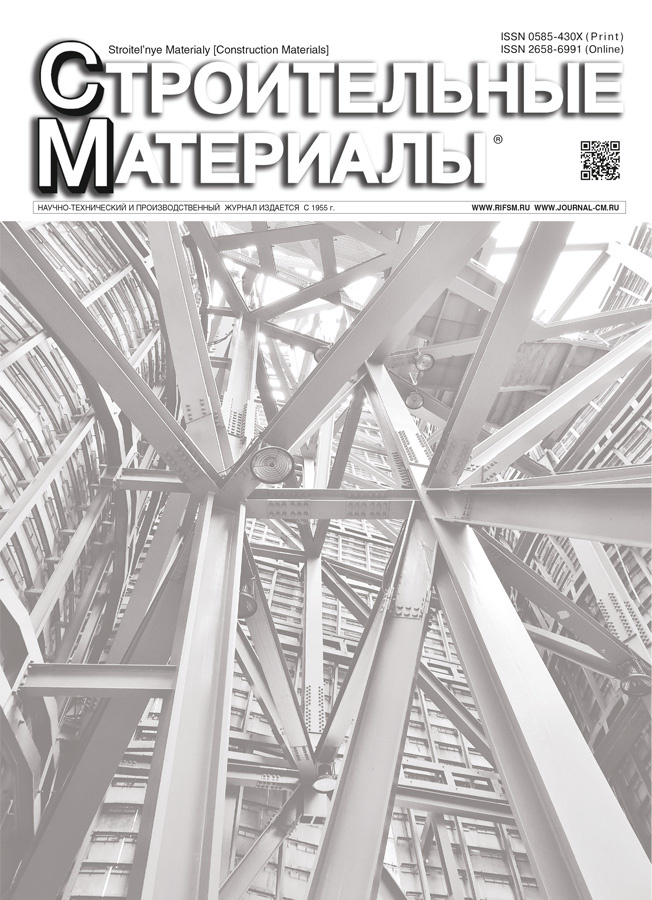The National Standard for Gypsum Foam Insulation Has Been Approved
- Авторлар: Bessonov I.V.1,2, Buryanov A.F.3,2
-
Мекемелер:
- Scientific Research Institute of Building Physics of the Russian Academy of Architecture and Construction Sciences
- Russian Gypsum Association
- National Research Moscow State University of Civil Engineering
- Шығарылым: № 8 (2025)
- Беттер: 5-8
- Бөлім: Статьи
- URL: https://rjdentistry.com/0585-430X/article/view/690191
- DOI: https://doi.org/10.31659/0585-430X-2025-838-8-5-8
- ID: 690191
Дәйексөз келтіру
Аннотация
Gypsum foam materials and products meet the requirements of the main provisions of the System of Regulatory documents in construction on fire safety, safety for human life and health in living and staying in buildings. The technology for producing gypsum foam was developed by Soviet scientists at leading scientific institutes of the construction industry. Modern conditions dictate new requirements for building materials, including thermal insulation. As part of the creation of an evidence base for the draft technical regulations of the Eurasian Economic Union “On the safety of building materials and products”, the national standard “Thermal insulation materials and products. Foam gypsum and products made from it. Specifications”.
Негізгі сөздер
Толық мәтін
Авторлар туралы
I. Bessonov
Scientific Research Institute of Building Physics of the Russian Academy of Architecture and Construction Sciences; Russian Gypsum Association
Хат алмасуға жауапты Автор.
Email: bessonoviv@mail.ru
Candidate of Sciences (Engineering)
Ресей, 21, Lokomotivny Dr., Moscow, 127238; 117, K. Marx St., Kraskovo, Moscow Region, 140050A. Buryanov
National Research Moscow State University of Civil Engineering; Russian Gypsum Association
Email: rga-service@mail.ru
Doctor of Sciences (Engineering)
Ресей, 26, Yaroslavskoe Hwy, Moscow, 129337; 117, K. Marx St., Kraskovo, Moscow Region, 140050Әдебиет тізімі
- Gorelik P.I., Zolotova Yu.S. Modern thermal insulation materials and features of their application. Stroitel’stvo Unikal’nykh Zdaniy i Sooruzheniy. 2014. No. 3 (18), pp. 93–103. (In Russian). EDN: SCPFFT
- Proskurovskis A., Nazinyan L.G., Tarasova A.A., Belyaeva S.V. Energy-efficient expanded clay concrete wall block. Construction of Unique Buildings and Structures. 2019. No. 3 (78), pp. 23–35. EDN: CWMRNO. https://doi.org/10.18720/CUBS.78.2
- Manankov V.M. Reflective thermal insulation in energy-saving construction. Vestnik MGSU. 2011. No. 3–1, pp.319–326. (In Russian). EDN: OVYOQF
- Buryanov A.F., Galtseva N.A., Buldyzhova E.N., Fisher H.B. Theory and practice of using gypsum and anhydrite binders. In the collection: Fundamental, exploratory and applied research of RAASN on scientific support for the development of architecture, urban planning and the construction industry of the Russian Federation in 2021. Moscow, 2022, pp. 58–65. (In Russian). EDN: OVEGSP
- Shigapov R.I., Sinitsyn D.A., Kuznetsov D.V., Gaisin A.M., Nedoseko I.V. Use of structural and thermal insulation foam gypsum in the construction and reconstruction of buildings. Problems and prospects. Stroitel’nye Materialy [Construction Materials]. 2020. No. 7, pp. 28–33. (In Russian). EDN: NNWLAW. https://doi.org/10.31659/0585-430X-2020-782-7-28-33
- Bessonov I.V., Zhukov A.D., Bobrova E.Yu., Gorbunova E.A., Govryakov I.S. Optimization of the properties and structure of ultra-light materials using digital methods. Nanotekhnologii v Stroitel’stve: scientific online journal. 2025. Vol. 17. No. 2, pp. 109–118. (In Russian). EDN: WXZIJJ. https://doi.org/10.15828/2075-8545-2025-17-2-109-118
- Lesovik V.S., Chernysheva N.V., Klimenko V.G. Processes of structure formation of gypsum-containing composites taking into account the genesis of raw materials. Izvestiya of Higher Educational Institutions. Construction. 2012. No. 4, pp. 3–11. (In Russian). EDN: PASPER
- Pshenichny G.N. Studies on the hardening of building gypsum. Tekhnika i Tekhnologiya Silikatov. 2021. Vol. 28. No. 1, pp. 2–6. (In Russian). EDN: UZALCS
- Otman Azmi S.A., Chernysheva N.V., Drebezgova M.Yu., Kovalenko E.V., Masalitina S.V. Composition and properties of composite gypsum binder with increased water resistance. Stroitel’nye Materialy [Construction Materials]. 2023. No. 5, pp. 81–88. (In Russian). EDN: NYBLIJ. https://doi.org/10.31659/0585-430X-2023-813-5-81-88
- Jiansen Yang, Hanxi Zhu, Xiangyang Cao. Research on pore structure of foam gypsum modified by portland-sulphoaluminate composite cement (PSACC). Modeling and Simulation in Engineering. 2024. Vol. 1. EDN: BIZOXF. https://doi.org/10.1155/2024/3815734
- Hana Sekavová, Zdeněk Prošek, Pavel Tesárek. Dependence of mechanical and thermal properties on the composition of lightweight gypsum composites. Acta Polytechnica CTU Proceedings. 2023. Vol. 40, pp. 88–92. https://doi.org/10.14311/APP.2023.40.0088
- Bessonov I.V. Moisture transfer characteristics of foam gypsum. Stroitel’nye Materialy [Construction Materials]. 2012. No. 7, pp.34–37. (In Russian). EDN: PFTKCX
- Shigapov R.I., Sinitsyn D.A., Khalikov R.M., Solovieva E.A., Nedoseko I.V. Efficient use of dry foaming agents in the manufacture of foam gypsum thermal insulation nanocomposites. Nanotekhnologii v Stroitel’stve: scientific online journal. 2022. Vol. 14. No. 4. pp. 274–281. (In Russian). EDN: JCWFCQ. https://doi.org/10.15828/2075-8545-2022-14-4-274-281
- Bessonov I.V., Buryanov A.F. Penogips v stroitel’stve: monografiya [Foam gypsum in construction: monograph]. Moscow: Publishing house MISI–MGSU. 2024. 132 p.
- Bessonov I.V., Buryanov A.F. Foam gypsum in modern low-rise construction. Zhilishchnoye Stroitel’stvo [Housing Construction]. 2024. No. 5, pp. 26–34. (In Russian). EDN: MVDQII. https://doi.org/10.31659/0044-4472-2024-5-26-34
Қосымша файлдар







